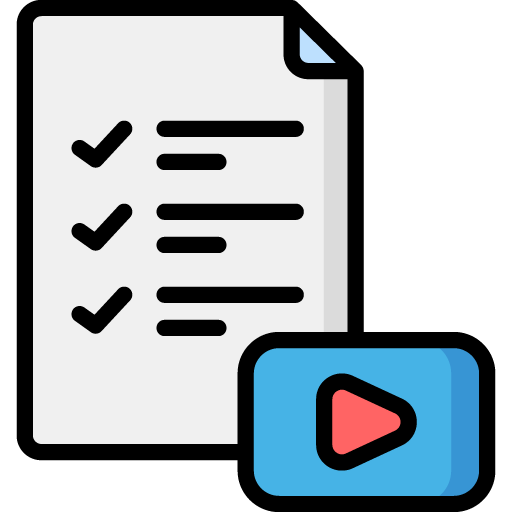Integrating Audience Feedback
How to Use Viewer Feedback and Comments to Guide Your Content Planning
As content creators, we’re always looking for ways to improve and stay relevant. One of the best ways to understand what your audience wants is by listening to them! Whether it’s through comments, direct messages, polls, or any form of interaction, feedback is a goldmine for shaping your content.
In this blog, we’ll dive into how you can integrate audience feedback to enhance your content planning. By embracing what your viewers share with you, you can create content that resonates and builds stronger relationships with your audience.
Why Audience Feedback Matters
Listening to your audience isn’t just about making them happy—it’s about creating content that has a meaningful impact. Here’s why feedback is essential:
- Boost Engagement: When you pay attention to your audience’s needs and opinions, you increase engagement. Viewers feel heard, and that builds loyalty.
- Create Relevant Content: Viewer feedback tells you what topics or styles resonate the most, so you can plan content that aligns with their interests.
- Build Trust and Community: Acknowledge your audience’s opinions, and you’ll foster a deeper sense of community. Trust is built when viewers see you value their input.
- Improve Retention: By creating content based on feedback, you’re more likely to keep your audience engaged over time.
Where to Gather Audience Feedback
Now that we understand why feedback matters, it’s time to look at where you can find it. Audience feedback comes in many forms, and gathering it from various sources will give you a broader understanding of what your viewers want.
- Comments on Videos and Posts: This is the most direct form of feedback. Comments allow you to see exactly what viewers liked, disliked, or want more of.
- Look for patterns: Are multiple viewers mentioning the same points? That’s a strong indicator of what resonates with them.
- Social Media Polls and Surveys: Tools like Instagram polls, Twitter surveys, or even email surveys can help you collect targeted feedback.
- Engage with your audience: Ask questions about upcoming content, topics they want you to explore, or even their opinions on content formats (videos, blogs, tutorials).
- Direct Messages: Some followers prefer sending direct feedback via DMs. Don’t underestimate the value of these private messages, as they can often contain detailed insights.
- Personal touch: Responding to DMs makes your audience feel special and heard, further building trust.
- Analytics and Data: Platforms like YouTube, Instagram, and Facebook provide valuable data on audience behavior, including which videos or posts perform best.
- What’s working: Use this data to see which types of content are getting the most engagement, and adjust accordingly.
Analyzing Feedback: Turning Input into Action
Not all feedback is created equal, and sometimes, the volume of comments or messages can be overwhelming. It’s important to analyze the feedback you receive and break it down into actionable insights.
- Identify Common Themes: Look for recurring comments or suggestions across your content. If multiple viewers express interest in a certain topic, that’s your cue to explore it further.
- Understand Viewer Pain Points: Feedback can also highlight areas where your audience is struggling. Are they asking for more detailed tutorials? Do they want longer content? Use this feedback to solve their pain points and provide more value.
- Balance Criticism and Praise: While positive feedback is great, don’t overlook constructive criticism. Use both to improve your content and give your audience what they need.
- Pro Tip: If a viewer points out an issue (like unclear explanations or slow pacing), make it a point to address it in your next video or post.
- Use Analytics to Validate: Cross-check your qualitative feedback (comments, DMs) with quantitative data (view count, watch time) to validate trends.
- If viewers suggest longer videos but your data shows they stop watching after a certain time, that feedback might need a more tailored approach.
How to Implement Feedback in Your Content Planning
Now that you’ve gathered and analyzed the feedback, it’s time to integrate it into your content strategy. Here’s how you can put feedback to work for you:
- Adjust Your Content Calendar:
- If viewers ask for a certain topic, adjust your content calendar to include it. Keep an eye on trending topics and integrate audience suggestions into your plans.
- Example: If several followers request more behind-the-scenes content, add that to your schedule for the upcoming month.
- Create Content Based on Requests:
- If multiple viewers suggest a similar video idea (e.g., “Could you do a tutorial on X?”), create that content! It’s a clear sign that your audience wants it, and creating content based on their requests strengthens your relationship with them.
- Refine Content Formats:
- Feedback about content length, style, or format can guide how you create content. Are your followers asking for shorter, snappier videos? Consider adjusting your approach.
- Example: If viewers love your in-depth, long-form content but mention it’s hard to keep up with, try breaking the content into smaller, digestible parts.
- Engage Directly with Viewers:
- Replying to comments and asking follow-up questions can turn simple feedback into a conversation. This is a great way to build community and keep people coming back.
- Example: “Thanks for your suggestion! I’ll dive deeper into that topic in my next video. Do you want me to focus on any specific part of it?”
Encouraging More Feedback from Your Audience
The more feedback you gather, the better you can tailor your content to your viewers’ needs. Here are some simple ways to encourage more feedback:
- Ask Direct Questions: At the end of your videos or posts, ask your audience to comment their thoughts or suggestions.
- Example: “What would you like to see more of on my channel? Drop a comment below!”
- Host Q&A Sessions: Invite your audience to ask questions via social media or live streams, and address them in your content.
- Example: “I’m hosting a Q&A next week! Drop your questions in the comments!”
- Use Feedback Polls: Occasionally post polls on your social media or YouTube community tab to get a pulse on your audience’s preferences.
- Example: “What content should I focus on next? Vote in the poll!”
Repurposing Feedback for Better Content Strategy
Don’t let great feedback go to waste. Use it to guide not just your individual videos but also your broader content strategy.
- Create Series Around Popular Topics: If a specific topic gets a lot of positive feedback, create a series around it. This allows you to dive deeper and keep your audience coming back for more.
- Iterate on Past Content: If feedback suggests improvements on past videos, consider doing a follow-up or revisiting old content with updates or new information.
- Make Viewer Feedback Part of Your Brand: The more you incorporate your audience’s suggestions, the more they feel connected to your content. Make feedback a central part of your content creation process.
Final Thoughts: Embrace the Power of Your Audience
The relationship between a creator and their audience is built on trust, and the best way to build that trust is by listening. Audience feedback isn’t just helpful—it’s essential for evolving your content. By engaging with your audience and acting on their suggestions, you can create content that not only resonates but also builds a stronger community.
So, start integrating viewer feedback into your content planning. Whether it’s adjusting your content schedule, creating new formats, or refining your messaging, your audience’s voice can be your guide to success.







 Edit Your Footage
Edit Your Footage
Leave a Reply